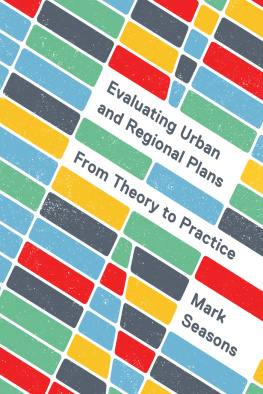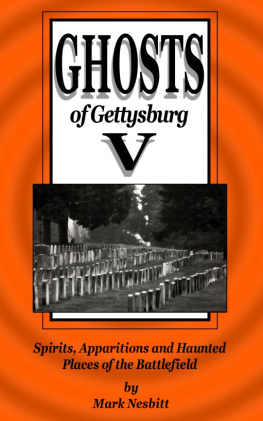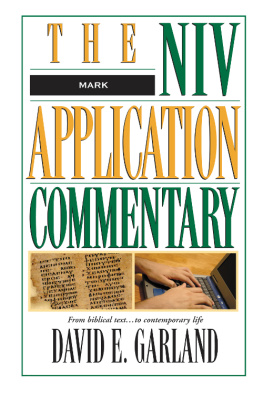
Big Places, Big Plans
Perspectives on Rural Policy and Planning
Series Editors:
Andrew Gilg
University of Exeter, UK
Keith Hogg art
Kings College, London, UK
Henry Buller
Cheltenham College of Higher Education, UK
Owen Furuseth
University of North Carolina, USA
Mark Lapping
University of Southern Maine, USA
Other titles in the series
Geographies of Rural Cultures and Societies
Edited by Lewis Holloway and Moya Kneafsey
ISBN 07546 35716
Mapping the Rural Problem in the Baltic Countryside
Transition Processes in Rural Areas of Estonia, Latvia and Lithuania
Edited by Ilkka Alanen
ISBN 07546 34345
Power and Gender in European Rural Development
Edited by Henri Goverde, Henk de Haan and Mireia Baylina
ISBN 07546 40205
Young People in Rural Areas of Europe
Edited by Birgit Jentsch and Mark Shucksmith
ISBN 07546 34787
Multifunctional Agriculture
A New Paradigm for European Agriculture and Rural Development
Edited by Guido van Huylenbroeck and Guy Durand
ISBN 07546 35767
The Reform of the CAP and Rural Development in Southern Europe
Edited by Charalambos Kasimis and George Stathakis
ISBN 07546 31265
Big Places, Big Plans
Edited by
Mark B. Lapping
University of Southern Maine
Owen J. Furuseth
University of North Carolina, Charlotte
First published 2004 by Ashgate Publishing
Reissued 2018 by Routledge
2 Park Square, Milton Park, Abingdon, Oxon OX14 4RN
711 Third Avenue, New York, NY 10017, USA
Routledge is an imprint of the Taylor & Francis Group, an informa business
Mark B. Lapping and Owen J. Furuseth 2004
Mark B. Lapping and Owen J. Furuseth have asserted their right under the Copyright, Designs and Patents Act, 1988, to be identified as the editors of this work.
All rights reserved. No part of this book may be reprinted or reproduced or utilised in any form or by any electronic, mechanical, or other means, now known or hereafter invented, including photocopying and recording, or in any information storage or retrieval system, without permission in writing from the publishers.
A Library of Congress record exists under LC control number: 2004002029
Notice:
Product or corporate names may be trademarks or registered trademarks, and are used only for identification and explanation without intent to infringe.
Publishers Note
The publisher has gone to great lengths to ensure the quality of this reprint but points out that some imperfections in the original copies may be apparent.
Disclaimer
The publisher has made every effort to trace copyright holders and welcomes correspondence from those they have been unable to contact.
ISBN 13: 978-0-815-38778-7 (hbk)
ISBN 13: 978-1-351-16252-4 (ebk)
Contents
Mark B. Lapping and Owen J. Furuseth
Robert M. Sanford and Mark B. Lapping
Robert J. Mason
Hugh J. Gayler
Robert H. Twiss
Jaap Vos
Andrew Fisk
Glenn R. Harris and Michael G. Jarvis
Owen J. Furuseth and Mark B. Lapping
Andrew Fisk , formerly with the Maine Land Use Regulatory Commission, is the Aquaculture Coordinator for the Maine Department of Marine Resources, Augusta, Maine, USA.
Owen J. Furuseth is Professor, Department of Geography and Earth Sciences, University of North Carolina at Charlotte, USA.
Hugh J. Gayler is Chair and Associate Professor, Department of Geography, Brock University, St. Catherines, Ontario, Canada.
Glenn R. Harris is Chair and Professor, Department of Environmental Studies, St. Lawrence University, Canton, New York, USA.
Michael G. Jarvis is Research Assistant for the Delaware State Energy and Transit Committee, a graduate student at the University of Delaware, and a graduate of St. Lawrence University, Canton, New York, USA.
Mark B. Lapping is Professor of Public Policy and Planning, Edmund S. Muskie School of Public Service, University of Southern Maine, Portland, Maine, USA.
Robert J. Mason is Director of the Environmental Studies Program and Associate Professor, Department of Geography and Urban Studies, Temple University, Philadelphia, Pennsylvania, USA.
Robert M. Sanford is Associate Professor of Environmental Science and Policy, University of Southern Maine, Gorham, Maine, USA.
Robert H. Twiss is Professor of Emeritus of Environmental Planning and Landscape Architecture, University of California, Berkeley, California, USA.
Jaap Vos is Assistant Professor, Department of Urban and Regional Planning, Florida Atlantic University, Ft. Lauderdale, Florida, USA.
This book could not have come together without the technical skills and patience of a number of colleagues at the University of North Carolina at Charlotte. We gratefully recognize Gary Addington, Carolyn Aguiar, Patrick Jones, Lisa Newman, Michelle McHugh, and Norma Redmond for their contributions to this volume. Finally, thanks to The Department of Geography and Earth Sciences for providing a collegial base for our work.
Mark B. Lapping
Owen J. Furuseth
To our families for their boundless support,
and to the staff and physicians at
The Southern Maine Dialysis Center
Chapter 1
Introduction
Mark B. Lapping and Owen J. Furuseth
With origins m the late 1960s, a quiet revolution in land use planning and control has taken hold across North America for better than four decades. At least that is how it looks to numerous commentators and most especially to Fred Bosselman and David Callies who, in a report they authored for the Presidents Council on Environmental Quality published in 1961, actually coined the phrase the quiet revolution in land use control. Some, like Frank Popper, saw the quiet revolution as a manifestation of the arrival of the environmental movement as a distinct and powerful force in national and local political life. Responding to numerous examples of environmental despoliation and on-going threats to large-scale ecosystems, the revolution prompted governments at several levels to attempt to protect critical areas and vulnerable environmental resources. Poppers view was largely coincident with that of Robert Healy as outlined in his 1976 classic, Land Use and the States. More recently Jerry Weitz has argued that the quiet revolution has matured into something more akin to a permanent revolution in that it has now been transformed into the Smart Growth movement. But a few others, like Michael Heiman, have seen events differently. He maintained that the development of land use policy in the latter part of the twentieth century has been little more than the inevitable consequence of class conflict in which state authority was manipulated to protect elite patterns of land use and resource consumption.
No matter their views on the nature of the revolution, or the lack thereof, analysts and planners tend to agree that a certain amount of continuity exists between initial attempts at large-scale regional land use planning to protect endangered areas and ecosystems and the more contemporary impetus to reign-in sprawl across the landscape, the Smart Growth, movement. Aspects of continuity include the promotion of strategies to manage growth, recognition that projects of regional scale and impact can too rarely be effectively addressed by traditional local planning regimes, and that areas of critical concern-places of unique and complex environmental characteristics-often require the establishment of new planning systems and jurisdictions which superseded local planning prerogatives in the name of the public interest. Not surprisingly, rural areas of significant natural and aesthetic character, and rural areas under substantial urban development pressure, have been and remain the focus of many of the revolutions planning schemes. Invariably these are large areas, big places if you will, which have become subject to big and complex plans.













